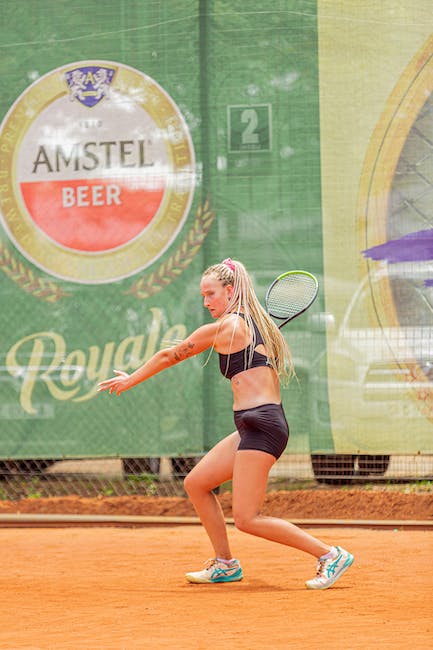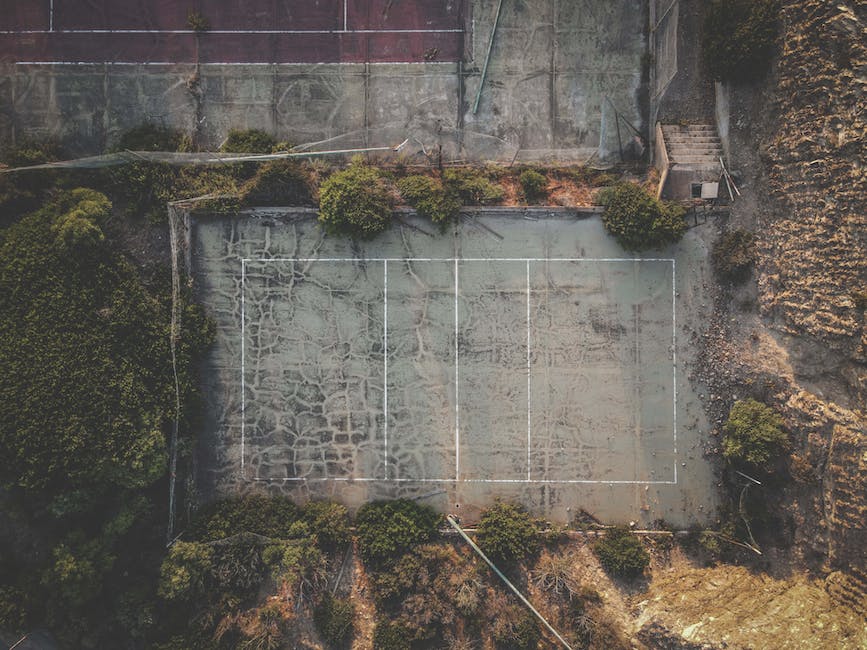Tennis is one of the most popular sports in the world, with millions of fans and players. But do you know where did tennis originate? How did it evolve from a simple ball game to a global phenomenon? In this blog post, we will explore the history of tennis, from its ancient roots to its modern form.

The Origins of Tennis: Jeu de Paume
The earliest form of tennis can be traced back to the 12th century in France, where people played a game called jeu de paume (game of the palm). As the name suggests, players used their palm of the hand to hit a ball over a net or a rope. The game was popular among monks, nobles, and even kings, who played it in indoor tennis courts that resembled churches.
Jeu de paume was not only a sport, but also a social and cultural activity. It had its own rules, etiquette, and terminology. For example, the word tennis comes from the French word “tenez”, which means “hold” or “receive”. It was used by the server to warn the opponent before hitting the ball. Jeu de paume also influenced art, literature, and politics. For instance, King Louis X of France died of a fever after playing jeu de paume in 1316.
The Evolution of Tennis: Real Tennis
Jeu de paume continued to develop and spread throughout Europe until the 16th century, when it underwent a major transformation. Players started to use racquets instead of their hands, and balls made of cork or leather instead of wool or hair. The game also became more complex and strategic, with different types of shots and strokes. The new version of the game was called real tennis or royal tennis.
Real tennis was different from modern tennis in many ways. The court was not rectangular, but had irregular shapes and angles. The walls and roofs were part of the playing area, and players could bounce the ball off them. The net was higher in the middle than at the sides, and there were openings or galleries on the walls that served as targets or hazards. The scoring system was also different, based on multiples of 15.
Real tennis was the favorite sport of many monarchs and aristocrats, such as Henry VIII of England, Francis I of France, and Charles V of Spain. It was also played by famous figures such as Shakespeare, Galileo, and Napoleon. However, real tennis declined in popularity after the French Revolution and the Industrial Revolution, as it was seen as an elitist and expensive game.

The Birth of Modern Tennis: Lawn Tennis
The modern game of tennis emerged in the 19th century in Britain, as a result of several innovations and adaptations. In 1830, Charles Goodyear invented vulcanized rubber, which allowed for the creation of bouncier balls. In 1850, Major Thomas Henry Gem and his friend Augurio Perera devised a game similar to real tennis, but played on a grass court in Perera’s garden. In 1872, Major Walter Clopton Wingfield patented a game called “sphairistike” (Greek for “ball game”), which he marketed as a portable and easy-to-play version of real tennis.
Wingfield’s game was the first to use a rectangular court, a net with equal height throughout, and a simplified scoring system. It also used an hourglass-shaped racquet with a lopsided head. Wingfield’s game became very popular among the upper class, who played it on their lawns or croquet grounds. However, it also faced criticism from real tennis players and enthusiasts, who found it too simple and boring.
The game evolved further as players modified the rules and equipment to make it more challenging and exciting. For example, they increased the size and weight of the racquet head, lowered the net height, changed the court dimensions, and adopted the advantage system. The first official lawn tennis tournament was held in 1877 at Wimbledon, England. It was open to male amateurs only, and attracted 22 participants. The winner was Spencer Gore, who received a silver cup and 12 guineas.

The Growth of Modern Tennis: The Open Era
Lawn tennis soon spread across the world, especially in countries that were part of the British Empire or influenced by British culture. In 1881, the United States Lawn Tennis Association (USLTA) was founded, and the first U.S. National Championship (now known as the US Open) was held. In 1891, the French Championships (now known as the French Open) were held for the first time. In 1905, the Australasian Championships (now known as the Australian Open) were held for the first time.
These four tournaments, along with Wimbledon, became known as the Grand Slam events, the most prestigious and important competitions in tennis. They attracted the best players from around the world, who competed for glory and honor. However, there was a major divide between amateur and professional players. Amateurs were not allowed to receive any money or prizes for playing tennis, while professionals earned their living by playing exhibition matches or touring with promoters. This created a lot of resentment and controversy, as many amateurs felt exploited and underpaid, while many professionals felt excluded and marginalized.
The situation changed in 1968, when the International Lawn Tennis Federation (ILTF) decided to allow both amateurs and professionals to compete in the Grand Slam events. This marked the beginning of the Open Era, a new era of tennis that opened up the sport to more players, sponsors, media, and fans. The Open Era also saw the emergence of new stars and legends, such as Rod Laver, Billie Jean King, Bjorn Borg, Martina Navratilova, John McEnroe, Chris Evert, Jimmy Connors, Steffi Graf, Pete Sampras, Andre Agassi, Serena Williams, Roger Federer, Rafael Nadal, Novak Djokovic, and many more.

The Future of Tennis: What’s Next?
Tennis has come a long way since its humble origins in France. It has become a global sport that is enjoyed by millions of people of all ages, backgrounds, and abilities. It has also become a sport that is constantly evolving and adapting to new challenges and opportunities. Some of the current trends and developments in tennis include:
- The use of technology and innovation to improve performance, training, coaching, officiating, broadcasting, and fan engagement. For example, players use smart racquets that measure various aspects of their game, such as speed, spin, power, and accuracy. Coaches use video analysis and biometric data to help players improve their skills and tactics. Officials use electronic line calling systems such as Hawk-Eye to ensure accuracy and fairness. Broadcasters use virtual reality and augmented reality to enhance the viewing experience for fans.
- The growth of diversity and inclusion in tennis, especially in terms of gender equality, racial justice, disability awareness, and LGBTQ+ rights. For example, women players have achieved equal prize money with men players at all Grand Slam events since 2007. Players of color have made significant contributions and achievements in tennis history, such as Arthur Ashe, Althea Gibson, Venus Williams, Naomi Osaka, and others. Players with disabilities have shown remarkable courage and skill in wheelchair tennis, deaf tennis, blind tennis, and other forms of adaptive tennis. Players who identify as LGBTQ+ have been supported and celebrated by the tennis community, such as Billie Jean King, Martina Navratilova, Amelie Mauresmo, Alison Van Uytvanck, and others.
- The impact of environmental and social issues on tennis, such as climate change, pandemics, human rights violations,
and political conflicts. For example,
players have faced extreme heat conditions at some tournaments due to global warming. Players have also had to cope with health risks and travel restrictions due to the COVID-19 pandemic. Players have also used their platform and influence to speak out against injustice and oppression in various parts of the world.
Tennis is a sport that reflects the history and culture of humanity. It is a sport that connects people across time and space. It is a sport that inspires passion and creativity. It is a sport that challenges us to grow and learn. It is a sport that we love.
We hope you enjoyed this blog post about where did tennis originate. If you have any questions or comments,
please feel free to share them below. Thank you for reading! 🎾

FAQ
What is the difference between real tennis and lawn tennis?
Real tennis and lawn tennis are two different versions of the game of tennis. Real tennis is the older and more complex version, which originated in the 16th century and is played on an irregular court with walls and roofs. Lawn tennis is the modern and simpler version, which originated in the 19th century and is played on a rectangular court with a net. Lawn tennis is more popular and widely played than real tennis, which is also called real tennis.
Who invented the game of sphairistike?
The game of sphairistike was invented by Major Walter Clopton Wingfield, a British army officer and inventor, in 1872. He patented his game as a portable and easy-to-play version of real tennis, and marketed it as a recreational activity for the upper class. His game was the first to use a rectangular court, a net with equal height throughout, and a simplified scoring system. However, his game was also criticized by real tennis players and enthusiasts, who found it too simple and boring.
What are the Grand Slam events in tennis?
The Grand Slam events are the four most prestigious and important tournaments in tennis. They are: Wimbledon, the US Open, the French Open, and the Australian Open. They are also known as the majors or the slams. To win a Grand Slam, a player has to win all four tournaments in the same calendar year. This is considered one of the greatest achievements in tennis history. Only five players have achieved this feat: Don Budge, Maureen Connolly, Rod Laver, Margaret Court, and Steffi Graf.
What is the Open Era in tennis?
The Open Era is the current era of tennis that began in 1968, when the International Lawn Tennis Federation (ILTF) decided to allow both amateurs and professionals to compete in the Grand Slam events. Before that, only amateurs were allowed to play in these events, while professionals earned their living by playing exhibition matches or touring with promoters. The Open Era opened up the sport to more players, sponsors, media, and fans. It also saw the emergence of new stars and legends, such as Billie Jean King, Bjorn Borg, Martina Navratilova, John McEnroe, Chris Evert, Jimmy Connors, Steffi Graf, Pete Sampras, Andre Agassi, Serena Williams, Roger Federer, Rafael Nadal, Novak Djokovic, and many more.
What is Hawk-Eye in tennis?
Hawk-Eye is an electronic line calling system that uses cameras and computers to track the trajectory and location of the ball on the court. It was introduced in 2002 as a way to improve accuracy and fairness in officiating. It is used in most major tournaments and matches to assist umpires and players in making line calls. Players can challenge a line call made by an umpire or a linesperson by requesting a Hawk-Eye review. The system then shows a replay of the ball’s movement on a screen or a board, along with a sound effect of “out” or “in”. If the system shows that the ball was out when it was called in, or vice versa, the call is overturned and the point is replayed or awarded accordingly.
What are some benefits of playing tennis?
Playing tennis has many benefits for physical, mental, and social health. Some of these benefits are:
- It improves cardiovascular fitness and endurance by increasing heart rate and oxygen intake.
- It strengthens muscles and bones by providing resistance and impact.
- It enhances coordination and balance by requiring quick movements and changes of direction.
- It boosts brain function and memory by stimulating neural pathways and cognitive skills.
- It reduces stress and anxiety by releasing endorphins and serotonin.
- It fosters social interaction and communication by encouraging teamwork and cooperation.
What are some types of tennis courts?
There are four main types of tennis courts: grass, clay, hard, and carpet. Each type has different characteristics that affect the speed, bounce, and spin of the ball.
- Grass courts are made of natural or artificial grass. They are the fastest type of court, as they have a low bounce and a slippery surface. They favor players who have strong serves and volleys.
- Clay courts are made of crushed brick or stone. They are the slowest type of court, as they have a high bounce and a rough surface. They favor players who have good baseline strokes and spins.
- Hard courts are made of concrete or asphalt. They are the most common type of court,
as they have a medium bounce and a smooth surface. They favor players who have balanced skills
and power. - Carpet courts are made of synthetic or textile materials. They are similar to hard courts,
but have a lower bounce and a softer surface. They favor players who have fast reflexes and agility.
What is the Davis Cup in tennis?
The Davis Cup is the oldest and largest international team competition in tennis. It was founded in 1900 by Dwight F. Davis, an American tennis player and politician, who donated a silver trophy for the event. The Davis Cup is contested by men’s national teams from around the world, who compete in a knockout format. The teams are divided into groups based on their ranking and region, and play each other in home-and-away ties. Each tie consists of five matches: four singles and one doubles. The team that wins three or more matches advances to the next round. The team that wins the final round is declared the champion.
What are some famous tennis rivalries?
Tennis has witnessed many famous and intense rivalries between players who have competed against each other for years, often in crucial matches and tournaments. Some of these rivalries are:
- Roger Federer vs Rafael Nadal: They have played 40 times, with Nadal leading 24-16. They have met in 10 Grand Slam finals, with Nadal winning six of them. They have contrasting styles and personalities, with Federer being elegant and graceful, and Nadal being fierce and passionate.
- Martina Navratilova vs Chris Evert: They have played 80 times, with Navratilova leading 43-37. They have met in 14 Grand Slam finals, with Navratilova winning 10 of them. They have dominated women’s tennis in the 1970s and 1980s, with both of them winning 18 Grand Slam singles titles each.
- John McEnroe vs Bjorn Borg: They have played 14 times, with McEnroe leading 7-6. They have met in four Grand Slam finals, with each of them winning two of them. They have epitomized the clash of cultures and generations, with McEnroe being rebellious and outspoken, and Borg being calm and reserved.
How can I learn to play tennis?
If you want to learn to play tennis, you will need some basic equipment, such as a racquet, a ball, and a court. You will also need some guidance from a coach, a friend, or a book. You will need to practice regularly and consistently, and learn the rules and techniques of the game. You will need to develop your skills and strategies, and improve your fitness and stamina. You will need to enjoy the game and have fun.
There are many resources available online that can help you learn to play tennis, such as videos, articles, podcasts, blogs, forums, apps, and games. You can also join a club or a community that offers tennis lessons, clinics, camps, tournaments, or social events. You can also watch professional matches or tournaments on TV or online, and learn from the best players in the world.
Tennis is a sport that can be played by anyone, at any age, at any level. It is a sport that can bring you joy and satisfaction. It is a sport that can change your life.








No Comment! Be the first one.